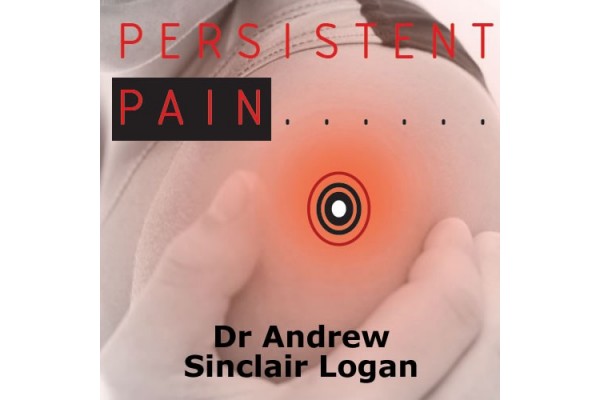Dr Andrew Logan
Consultant in Pain Management FRCA FFPMRCA
Contact Number: 07791681278
The definition of pain and the differences between acute pain and chronic pain are fundamental to an understanding of the problem of persisting pain.
Pain is an unpleasant sensory and emotional experience association with actual or potential tissue damage, or described in terms of such damage (http://www.iasp-pain.org). The above definition leads to the conclusion that pain is always subjective.
Another way of putting this would be to say ‘pain is what the person says it is existing when and where the person says it does.’
It can also be readily deduced from this definition that there does not actually have to be any tissue damage for there to be pain. Pain can exist without an obvious medical cause.
In a recent interview Consultant in Pain Management, Dr. Andrew Logan (BA Hons (Cantab) MB BChir FRCA FFPMRCA) explained more about the definition of pain in general and persisting pain relating to injuries received in an accident:
“We have all experienced short term or ‘acute pain’. This is a warning sign that helps to prevent injury and helps heal or reverse injury. Acute pain can be extremely useful in alerting us to avoid touching hot or sharp objectives, as well as seeking surgical attention for the abdominal pain of appendicitis. In both cases the experience of pain leads to behavioural changes that are useful and adaptive. Acute pain usually has a straightforward cause and is easy to diagnose and cure.”
“Whereas ‘chronic pain’ can be defined as ‘pain that extends beyond the expected period of healing’. This can be arbitrarily determined as 3 months, 6 months, 12 months or left simply as it is. It is not as easily understood as acute pain and often leads to, or is associated with, other issues such as psychological and social problems.”
“Pain is subjective, there is no objective way of measuring it. You have to ask the patient/claimant so exaggeration and malingering is not easily detectable due to the subjective nature of pain and its assessment. There are many simple ways of assessing pain. One way would be a numerical rating, where you would ask the patient to rate it from zero to 10. This is quite useful for the assessment and treatment of acute pain but too simplistic with regards to chronic pain which requires more detailed assessment.”
Depending on the severity of the injuries sustained in an accident or personal injury, persistent pain can be a real problem. There may be a continuing cause for this or the original precipitating factor may have caused injuries that have already healed and the general perception is that there should be no further problems. It is also possible that the injury may have exacerbated a pre-existing condition or may have been endured by a person who, for some reason, is more likely to develop chronic pain.
The pain may also be associated with functional difficulties, disability, psychological problems such as depression and anxiety and social problems. All these factors are likely to exacerbate the pain and lead to one or more vicious circles.
In such a situation Dr. Logan is able to draw on his vast experience to make an overall assessment of the patient from the pain management perspective. As there is much overlap between pain management and psychology, Dr. Logan may consider it necessary in some cases to seek the opinion of an expert in psychology or psychiatry, who may have already been consulted, (e.g. in cases where post traumatic stress disorder may be suspected).
There exist different types of pain after an injury, therefore it’s important to differentiate between these as the treatments for them are different, as Dr. Logan explained: “Nociceptive pain is the pain we all know about brought about by a noxious stimulus or at least described in those terms. Whereas Neuropathic or nerve pain is caused by a defect or problem in the nervous system. It is usually more difficult to describe than Nociceptive pain and often remote to the site of injury.
The pain of a slipped disc in the back or neck is felt down the leg or arm, the pain of shingles is often felt around the chest wall, but in all three cases the problem is in or near the spinal nerve root. The usual treatments used for Nociceptive pain are not very effective and other medications or treatments are often required.
The description of the pain and other symptoms such as numbness, pins and needles or altered sensation are very helpful in the diagnosis of the type of pain. As well as being exacerbated by psychological factors pain may also be caused by psychological factors. As they can co-exist, it is often difficult to decide on the exact type of pain, in which case they can also be categorised as ‘mixed’ pain.”
“Treatments for pain vary from medications and interventions to pain management programmes and psychological treatments such as cognitive behavioural pain therapy,” added Dr. Logan, “As a Pain Management Consultant I am often asked about prognosis and recommendations for further treatment. There is a broad palate of treatments to apply to the canvas of pain management. Treatments of different modalities are often recommended as part of the patient’s pain management programme, with physiotherapy, medication trials, interventional techniques and psychological techniques often forming part of a treatment plan.”
When asked whether video surveillance provided objective evidence for the Pain Management Consultant, Dr. Logan replied:
“Although the pain management expert has a duty to the court to provide an unbiased report it follows that, as a result of the subjectivity of pain, such reports will often be broadly in favour of the claimant. The pain management expert is trained to believe the ‘patient’ when that person describes and rates their pain.
However, it is not uncommon for pain specialists to be sent video surveillance records on which they are asked to comment. In many cases no firm conclusions can be made about pain as it can’t be measured or deduced from a video though it can help with some aspects of exaggeration of disability.
Pain itself cannot be observed on a video though behaviour associated with it can be seen. The absence of pain related behaviour does not indicate the absence of pain, as such behaviour - and the pain itself are often context sensitive. One would think that it would be reasonable to assume that a claimant who is not grimacing and groaning on a video but walks into the clinic doing so may be exaggerating. However, this would be a dangerous conclusion to form, as the snapshot of video is taken in a different context from the claimant or patient attending a pain management or medico-legal assessment. A range of opinion is very likely in this situation and video evidence should always be taken in the context of the whole case.
A criticism that can be made about many of these videos is that they are snapshots of activity over a short period of time and the viewer is not party to the behaviour of the claimant at other times, or over longer periods of time. We do not see the claimant when in bed, or in their own home. A man who usually uses a wheel chair, seen walking short distances on a few occasions on a video is not necessarily exaggerating or malingering. I would, of course, comment on the facts of the video but we do not know how much pain that man was in and we do not have video footage of whether he paid for his activity later with a prolonged period of bed rest.
By its very nature, video surveillance is selectively picking up on activity and action and not observing inactivity or lack of function. The surveillance has to be taken in the context of the whole case as to whether exaggeration or malingering are present and ultimately this may be a matter for the court to decide with opinions of the experts being split.
There are occasions, of course, where the video evidence is so compelling that it will result in a change of opinion.”
A Fellow of the Faculty of Pain Medicine of the Royal College of Anaesthetists (FFPMRCA) Dr. Logan provides services as a Pain Management Consultant at the Countess of Chester NHS Trust, Nuffield Health Chester; The Grosvenor Hospital, Chester and the Spire Hospital Warrington.
For further information contact:
Dr Andrew St. Clair Logan
MB ChB FRCA FFPMRCA
Nuffield Health
The Grosvenor Hospital, Wrexham Road,
Chester CH4 7QP
Tel Mobile: 07791681278
Secretary Sharon: 07763783601
Fax: 01244 851 278




